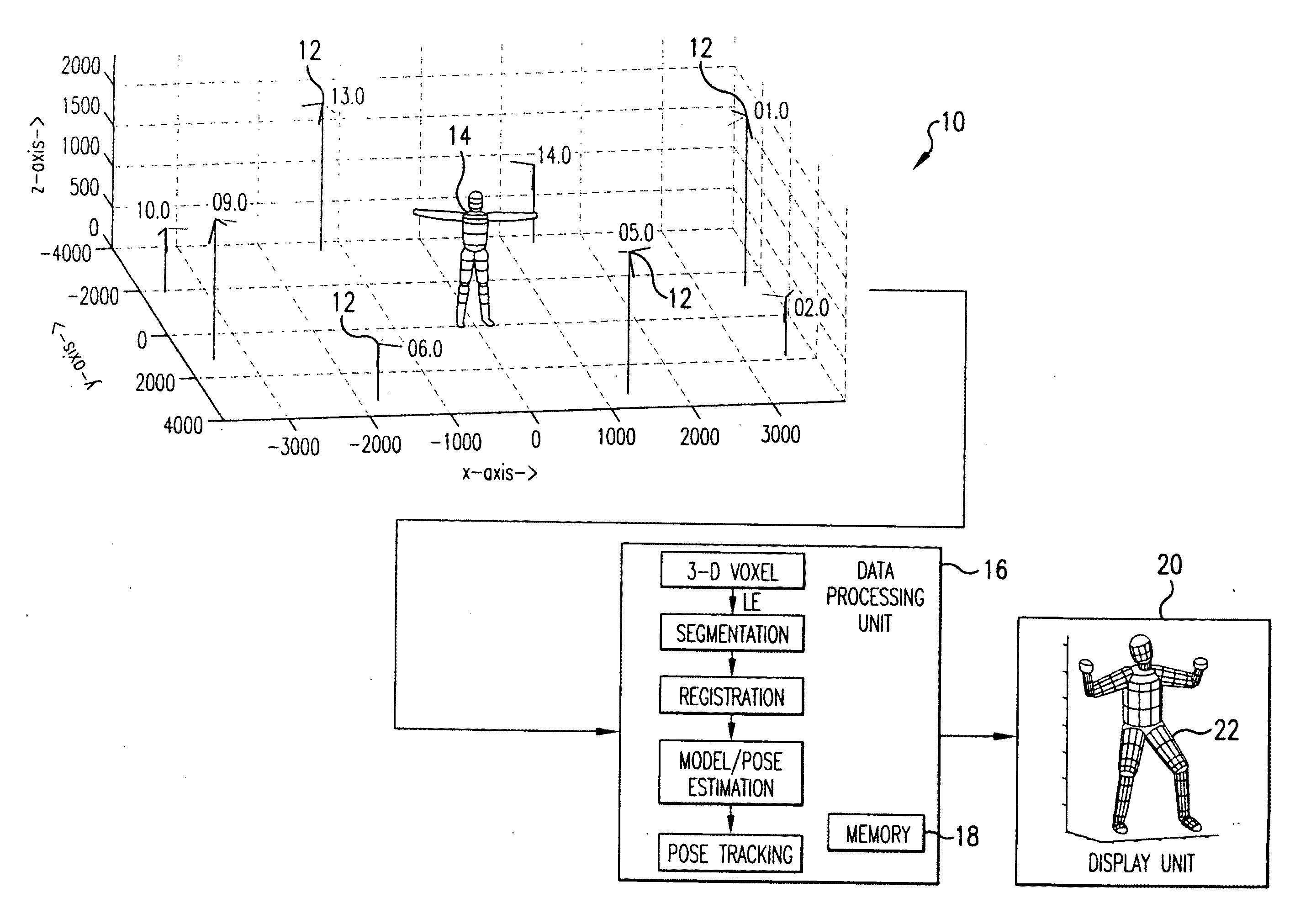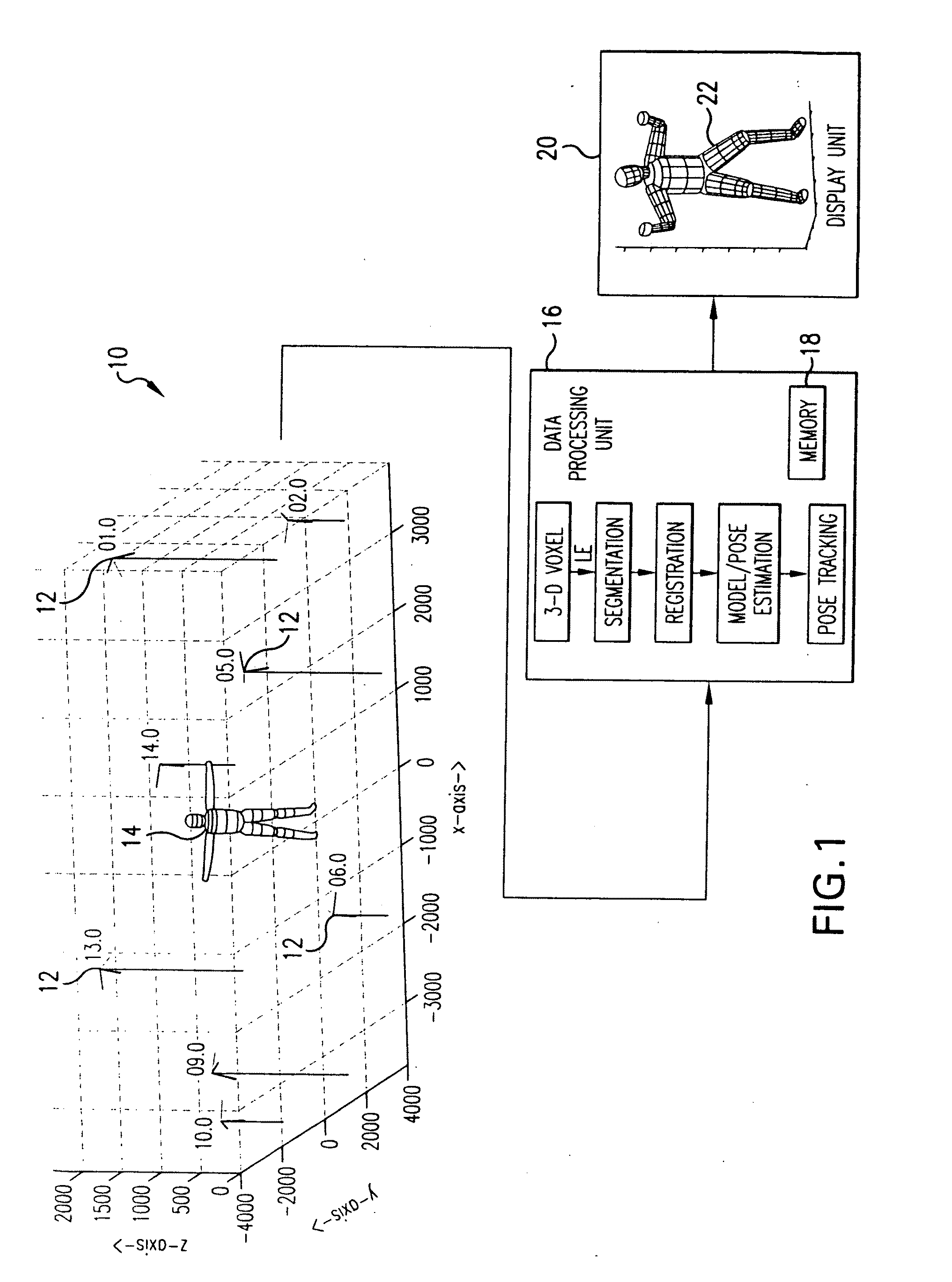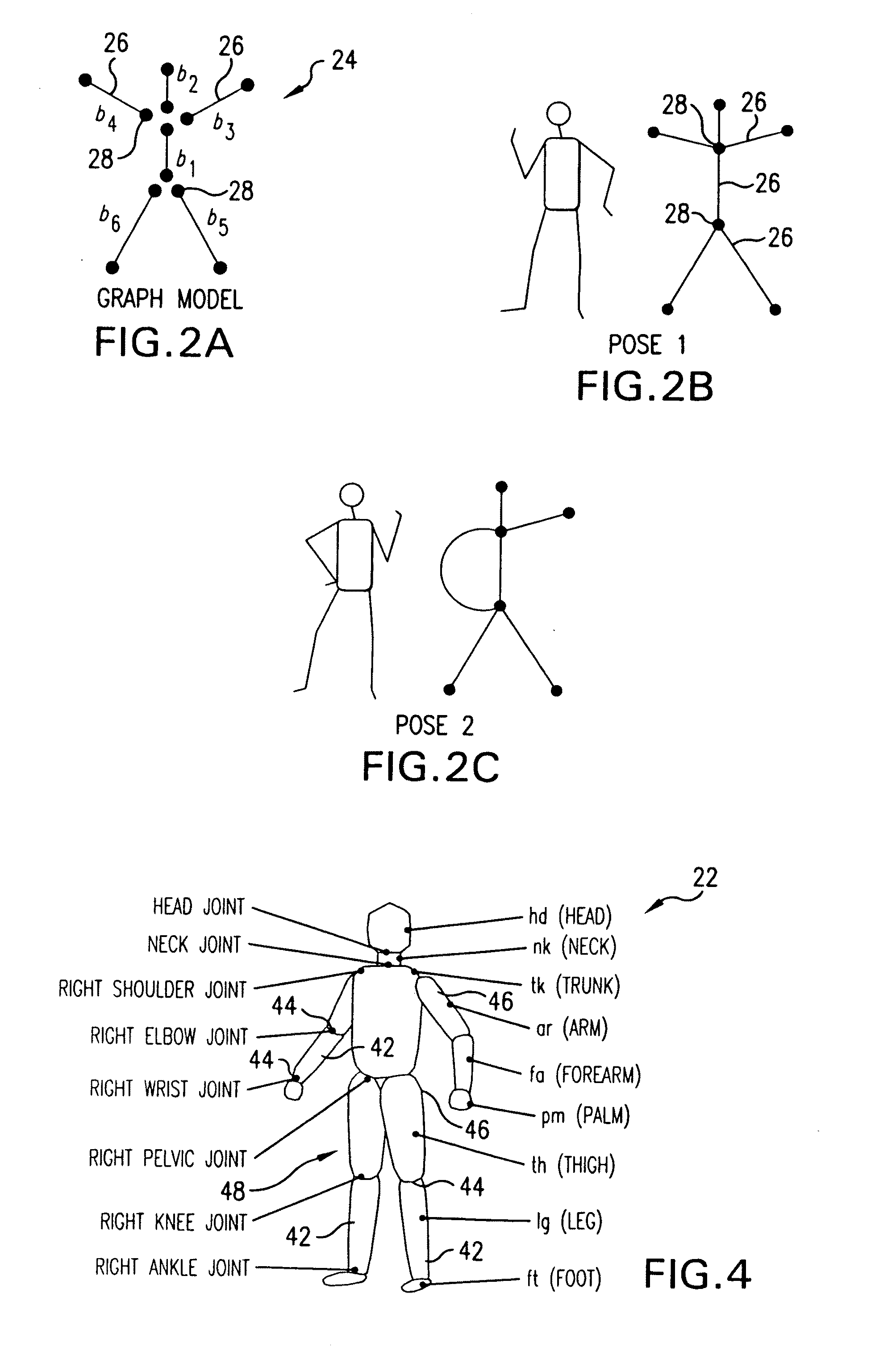Method and system for markerless motion capture using multiple cameras
a markerless and motion capture technology, applied in the field of motion capture, can solve the problems of affecting the movement of the subject, requiring subject preparation time, encumbering the subject, etc., and achieve the effect of accurate estimation and presentation
- Summary
- Abstract
- Description
- Claims
- Application Information
AI Technical Summary
Benefits of technology
Problems solved by technology
Method used
Image
Examples
Embodiment Construction
[0100]Referring to FIG. 1, the system 10 of the present invention uses a plurality of cameras 12 positioned in surrounding relationship with a subject 14 to acquire video sequences (images) of the subject motion. The video sequences are processed in a data processor unit 16 in accordance with a novel technique underlying the operation of the entire markerless motion capture system 10 of the present invention and presented further in detail. The results of data processing are recorded in a memory 18 of the computer (processor unit) 16, as well they are displayed at a display unit 20 for observation by a user. The data processor unit operates in accordance with an algorithm 180 which includes subroutines for processing images to build 3-D voxel reconstruction, mapping the 3-D voxel structure to the Laplacian Eigenspace, segmentation and registration of 1-D representations of body parts, model / pose estimation, and pose tracking.
[0101]The system 10 is a completely automated end-to-end s...
PUM
 Login to View More
Login to View More Abstract
Description
Claims
Application Information
 Login to View More
Login to View More - R&D
- Intellectual Property
- Life Sciences
- Materials
- Tech Scout
- Unparalleled Data Quality
- Higher Quality Content
- 60% Fewer Hallucinations
Browse by: Latest US Patents, China's latest patents, Technical Efficacy Thesaurus, Application Domain, Technology Topic, Popular Technical Reports.
© 2025 PatSnap. All rights reserved.Legal|Privacy policy|Modern Slavery Act Transparency Statement|Sitemap|About US| Contact US: help@patsnap.com



